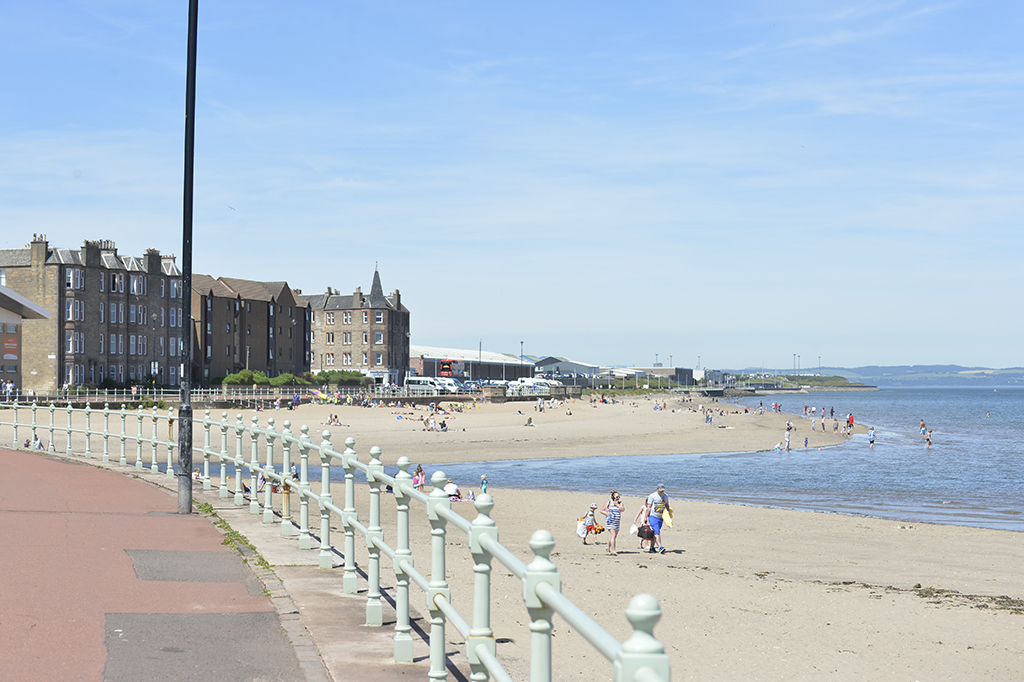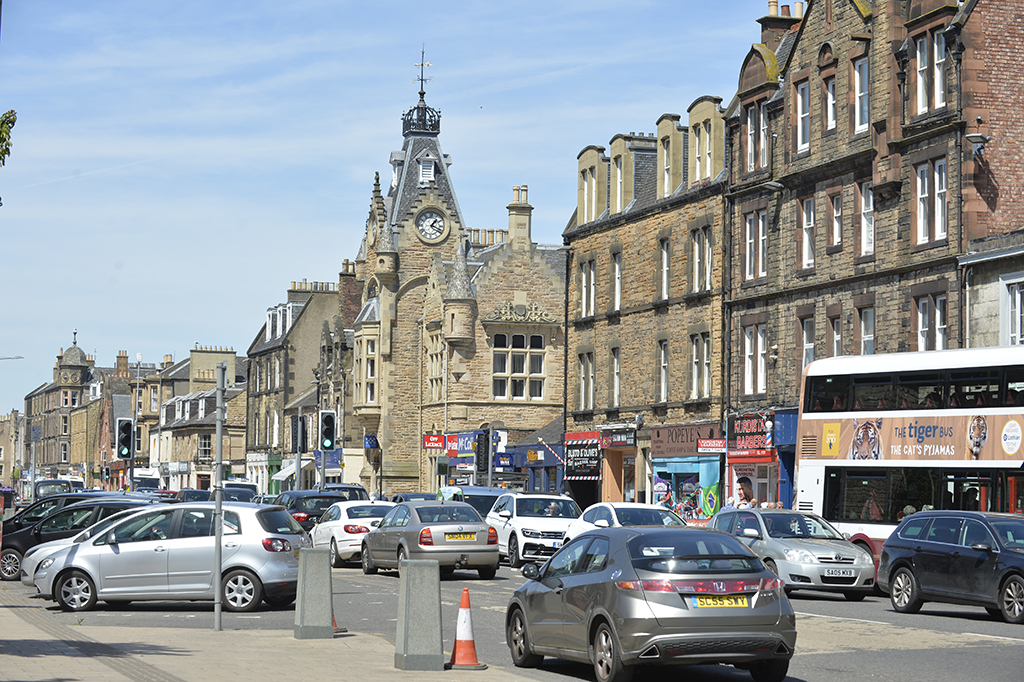
Edinburgh’s summer bolthole still has so much to offer
Portobello was traditionally Edinburgh’s playground and it still draws the crowds to its beach and promenade when the weather is fine.
When summer blesses the capital with warm sunny days, there’s nothing better than a stroll along Portobello’s promenade with an ice cream (flake optional) in hand, as you relax and soak up the rays.
However, what was a popular seaside resort at the start of the last century was not always on tourists’ radar.
Overlooking the Firth of Forth between Leith and Musselburgh, Portobello was first known as Figgate Whins (Figgate thought to be a Saxon word for ‘cow’s ditch’), an area of moorland used by the monks in Holyrood.
It was on this land that, in 1296, Lauder and Crystal of Seton to fi ght the and where, in 1650, Oliver Cromwell held Scottish leaders.
But it was only in was given its modern called it Puerto Bello Hut, after the famous battle fought in Panama.
The cottage was built on what we now know as High Street, close to the junction with Brighton Square. It eventually turned into a proper house and was the only inhabited building in the area until the beginning of the 1750s, with a number of potteries opening and laying the foundations of the local economy.
The land around Portobello house was eventually bought by a merchant named William Jamieson, who discovered a brick clay deposit here and started excavations in the area. This created one of the most successful brick businesses in the country, with exports reaching Europe and the US.

Portobello beach in the sunshine
One of Portobello’s most iconic buildings, The Tower – now neighbouring a local amusement centre – was an eccentric building for its time, the project included the stones of the houses that were taken down in order to build the South Bridge and St Andrews Cathedral.
In 1797, Sir Walter Scott became the quartermaster of the Edinburgh Light Horse and Portobello beach became a drill practice ground. Another notable historic moment goes back to 1822, when King George IV visited the beach for a review of the Highlanders and the troops. Hosted on the fine Portobello sands, this event was remembered as a magnificent parade and it was also the first royal visit to Scotland in two centuries.
Portobello reached its peak as a tourist attraction by the end of the 19th century: with its two main roads and the opening of the baths, it started drawing crowds from Glasgow and the central belt. At this time, Portobello had transformed itself into a large amusement park, with funfair attractions being part of the landscape.
Renowned performers from all over the country came here to entertain the crowds. One of its main attractions, besides the fairs that crowded the shore, was its swimming pool, a truly cutting edge facility for the time. With its artificial waves and Art Deco design, it was the largest outdoor bathing pool in Europe.
Opened in 1933, it was mothballed during the war but reopened in the late 1940s, counting a young lifeguard named Sean Connery among its employees.
However, the popularity of cheap package holidays abroad caused a sharp decline in Portobello’s crowds by the 1980s. The pool closed down and it was demolished in 1988.

Portobello still draws the crowds from the city
Despite the main funfair amusements having disappeared, Porty’s promenade and the main street still come alive with families and cyclists when the sun appears. It wasn’t until 1896, that Portobello was incorporated into Edinburgh, resulting in a strong sense of community, which continues to characterises this residential suburb.
Many community projects, such as the recently inaugurated Bellfield Community Centre, contribute to this.
New restaurants and attractions are popping up all the time. There is plenty of choice for the visitor whose stomach calls him to action and everything can be easily found within a short walking distance.
If you fancy a quick yet delicious bite, Bross Bagels is a highly recommended spot: a wee emporium with attentively-sourced ingredients and a cosy vibe, it also serves great coffee. If you prefer to stay on the beach, what could be more relaxing than munching a picnic while gazing out to sea?
Then there’s the Esplanade – The Espy to locals – with its homely feeling and great pints, it’s one of the best foodie venues in the area. While walking on the Promenade, it’s almost compulsory to stop at Crumbs of Portobello and treat yourself to a crêpe. Last but not least, gastropub Guild of Foresters will treat you to delicious ales and tasty dishes.
Besides having become a great place to eat, Portobello is bustling during its Big Beach Busk, which runs on the last Saturday in August. Good vibrations are always found at Dalriada for music lovers, with live gigs and interesting acts in a cosy environment.
When the sun is up and the sea calls, you can also enjoy a trip with the Portobello Sailing and Kayaking Club or the Row Porty Club. And if a dip in the water is too chilly, then head to the Turkish baths, one of the last three operating in Scotland.
This feature appears in the current issue of SF Edinburgh.
TAGS

